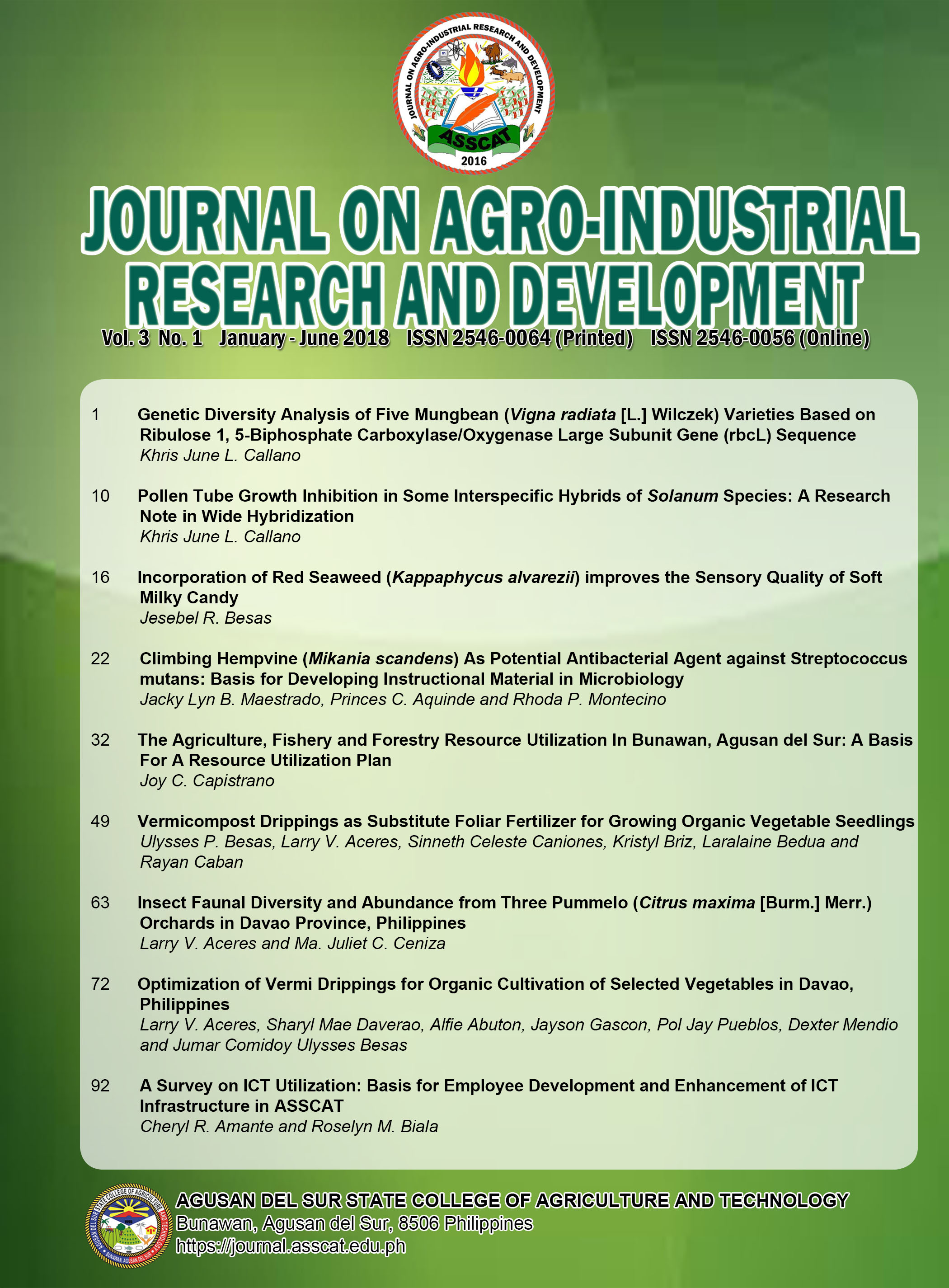The Agriculture, Fishery and Forestry Resource Utilization In Bunawan, Agusan del Sur: A Basis For A Resource Utilization Plan
Keywords:
Agriculture, Fishery and, Forestry resources, Indigenous knowledge system, Sustainable utilizationAbstract
The study described the agricultural, fishery, and forestry resources and its utilization in the ten (10) barangays of the municipality of Bunawan. Using a descriptive design, it employed interview and focus group discussion in gathering the data needed. The respondents were selected purposively based on age, membership in cultural community, and duration of stay in the barangay. Based on the findings, agriculture is the major industry comprising 70% of the economic activities in the municipality yet, almost half of the agricultural land is left idle. The fishery is the main livelihood of settlers in the coastal areas where some are challenged by the flood and expensive fishing gears. At the same time, the forestry resource is a good source of timber requirements but least prominent because cutting trees is done every five (5) years hence, not a permanent source of income. These resources are used widely for household consumption and the excess of personal subsistence are offered for trading to compradors. As time evolves, these resources are produced not only for household sustenance but for the market, as well. The indigenous knowledge system and modern ways of utilizing the agricultural, fishery and forestry resources are a combined practices that promises a surplus production. However, most of the farmers and fisherfolks cannot afford the capitalization of the modern technology thereby, affecting the production of the resources. Further, marketing, low farm gate price, and recurring flood adversely were also the main constraints of high yield. Thus, a plan is necessary to guarantee sustainable utilization of resources at the lowest possible environmental cost towards the upliftment of the quality of people’s lives in the municipality.





